
Fuchsia magellanica
In the Garden, September is frequently just an extension of August. It might be a little cooler, and maybe the weather systems move a little faster, but this month often still feels like summer. As such, summer-blooming plants often continue pumping out their flowers as long as the sun shines. Flowering at this time and powerfully attractive to hummingbirds are fuchsias, the majority of which are Central and South American plants. The cold-hardiest of these is Fuchsia magellanica (from southern Chile) and an example of which is prominently dispayed next to the welcome sign at the Garden’s entrance. An F. magellanica hybrid, ‘Little Giant’, sits a few metres to the west. Look for this and the lovely, pale-flowered Fuchsia magellanica Alba Group in the South American section of the E. H. Lohbrunner Alpine Garden.
Phygelius and Epilobium, two genera that include fuchsia look-alikes are also often in full display in September. Phygelius capensis (Cape fuchsia) and the hybrid Phygelius × rectus ‘Moonraker’ (yellow cape fuchsia) are both located in the African section of the Alpine Garden. Phygelius flowers are pollinated by perching birds in their native southern Africa, but here, have been “adopted” by our native hummingbirds. There are no hummingbirds (or any other hovering birds) in Africa, or indeed, anywhere outside of the Americas, so bird-adapted flowers from those regions are generally arranged so that birds can grasp a sturdy stalk and feed on the nectar-rich flowers at the same time. Phygelius × rectus is represented in the Front Entrance Plaza and in the Contemporary Garden by the red-flowered cultivar ‘Salmon Leap’.
Epilobium canum, which is more often known by a previous name, Zauschneria californica, as well as by the well-worn common name, California fuchsia, are naturally pollinated by hummingbirds. The plants (and hummingbirds) are conspicuous in the Pacific Slope garden and all across the Alpine’s North American section. The silver-grey ‘Olbrich Silver’ and grass-green Epilobium canum subsp. latifolium are standouts, but when it’s sunny and hot there isn’t a dud amongst the various cultivars and wild collections.
Another outstanding group of summer/September-flowering plants is the African genus Kniphofia (torch lilies or red-hot-pokers), and the E. H. Lohbrunner Alpine Garden has, over the years, acquired an increasingly diverse collection of these strap-leaved plants. They produce brilliant displays of tightly clustered tubular flowers atop stiff stems, mostly in late summer. The flowers, which are upright in bud at the tip of the stalk, gradually relax until, when open and ripe, they point downward, facilitating pollination by birds that perch below the flowers. Our hummingbirds quickly work out how to feed in their normal hovering, mid-air way, nevertheless. Sadly, however, the caloric and sucrose content of nectar in naturally hummingbird-pollinated flowers is much higher than that of the nectar of flowers from outside of the Americas (hovering is hard work, and hummingbird nectar reflects that). Luckily, there is plenty of high-test nectar available from our North and South American plants. Some of the showier Kniphofia species in the African section of the Alpine Garden include the easily-grown, long-blooming Kniphofia triangularis subsp. obtusifolia and the impressive Kniphofia linearifolia with its prolific yellow and orange drumstick heads. This appears to be a good year for torch lilies, so don’t miss the show. Close by is the mountain watsonia, Watsonia fourcadei, an iris relative from the mountains of South Africa’s Cape Province. Its flowers are naturally variable in colour, and ours produce spikes of brilliant, show-stopping (and bird-attracting) red flowers.
Some plants wait to bloom toward the end of summer, and species in the genus Hylotelephium (the garden orpines) tend to fit this bill. Most of ours are located across the sunnier parts of the Botanical Garden. Prominent in the Entrance Plaza plantings are two favourites: Hylotelephium spectabile Brilliant Group (showy stonecrop) with its bright pink star-shaped flowers, and its even more popular hybrid, the lavender-pink-flowered Hylotelephium ‘Herbstfreude’ (autumn joy). The two are mixed artistically in the two main beds on both sides of the plaza. Not far inside the Asian Garden entrance (behind the David Lam rock) is a larger planting of H. spectabile, which is, because of the shadier, cooler conditions there, usually a little behind in flowering compared with the front entrance plants. In the Contemporary Garden the maroon-stained leaves and pale rose-pink flowers of Hylotelephium telephium ‘Matrona’ stand out among the brighter perennials. There is a particularly handsome example of this cultivar in the Alpine Garden up the slope from the Alpine Garden sign. If hot weather and drought continue in September the flowers may decline and turn brown, but the varying hues of foliage colour make these plants handsome, regardless.
When considering September blooms, North American and Mexican salvias often come to mind. Normally cold hardy in the Botanical Garden, our best and showiest examples were frozen out by the extreme cold over the last two winters. An unusual salvia look-alike, Strobilanthes attenuata, known by the common name “cane-head” (the meaning of which is not apparent to me), comes into its own, like many salvias, in September. A member of the Acanthus (bear’s breeches) family, Strobilanthes is only distantly related to the salvias, which are in the mint family. There is a large colony of this purple-flowered Himalayan native in the David C. Lam Asian Garden under the large kiwifruit vine at Stearn Trail and Upper Asian Way. Finally, look for the expansive patch of Verbena bonariensis (purple top, tall verbena or Brazilian vervain) in the Food Garden. This exceptionally long-blooming hummingbird favourite is also a magnet for butterflies, bees and smaller nectar feeders, which makes it an ideal plant for both attracting beneficials and increasing biodiversity in the Food Garden.
- Epilobium canum ‘Olbrich Silver’
- Epilobium canum subsp. latifolium
- Fuchsia Little Giant
- Fuchsia magellanica Alba Group
- Fuchsia magellanica
- Hylotelephium spectabile Brilliant Group
- Hylotelephium ‘Herbstfreude’
- Hylotelephium telephium ‘Matrona’
- Kniphofia linearifolia
- Watsonia fourcadei
- Phygelius × rectus ‘Moonraker’
- Phygelius × rectus ‘Salmon Leap’
- Kniphofia triangularis subsp. obtusifolia
- Strobilanthes attenuata
- Verbena bonariensis
- Watsonia fourcadei
Submitted by: Douglas Justice, Associate Director, Horticulture and Collections

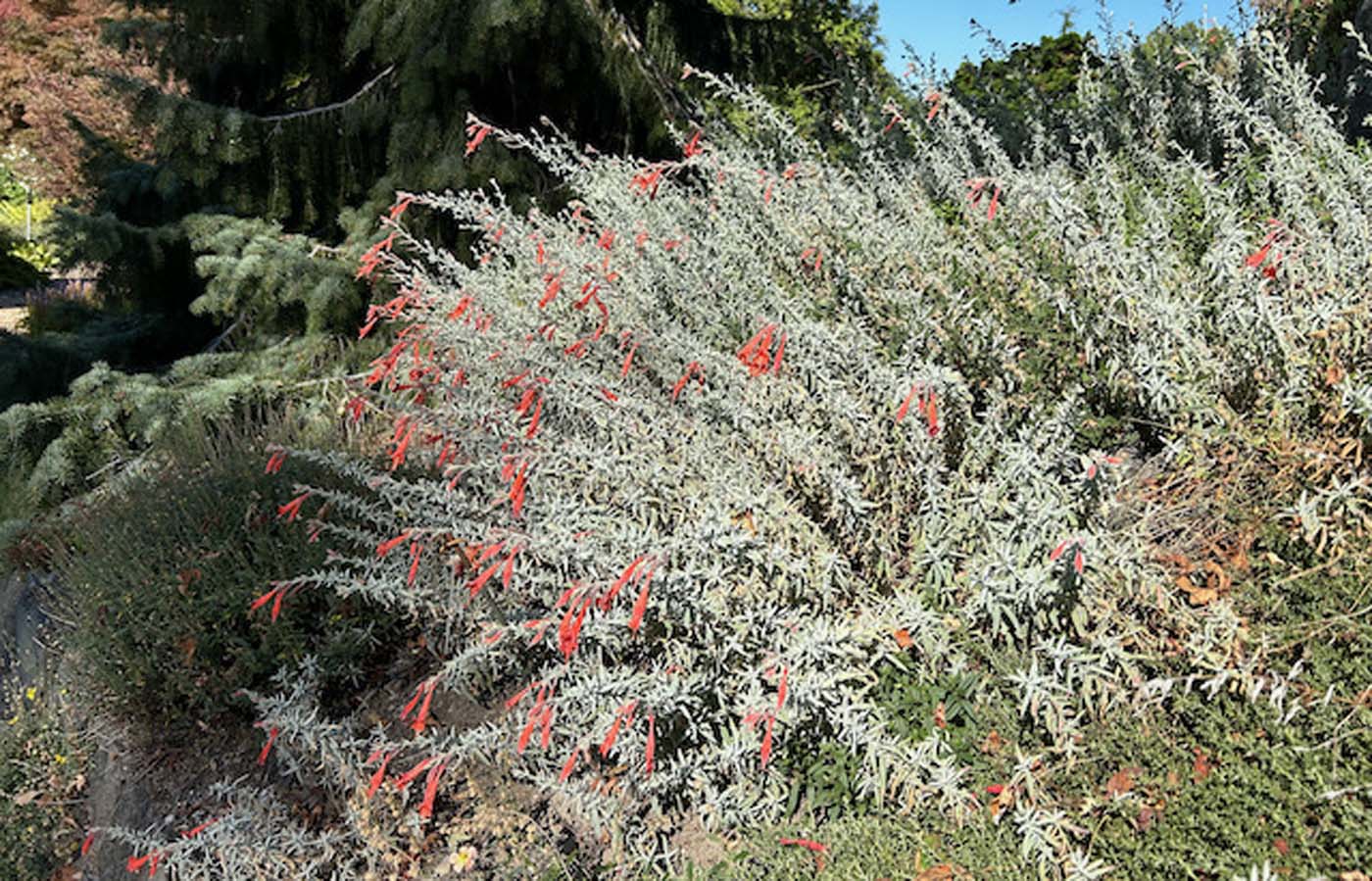
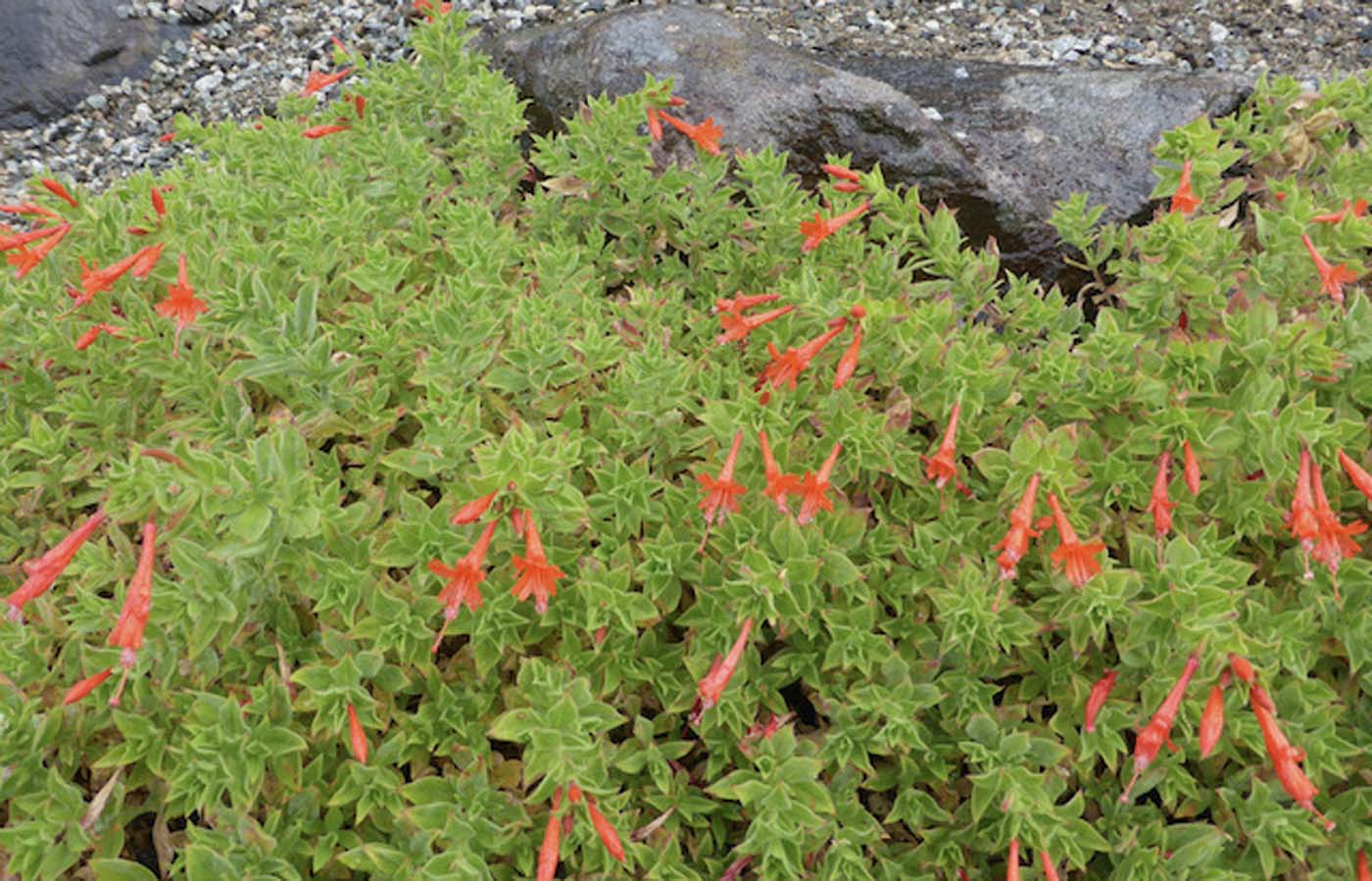
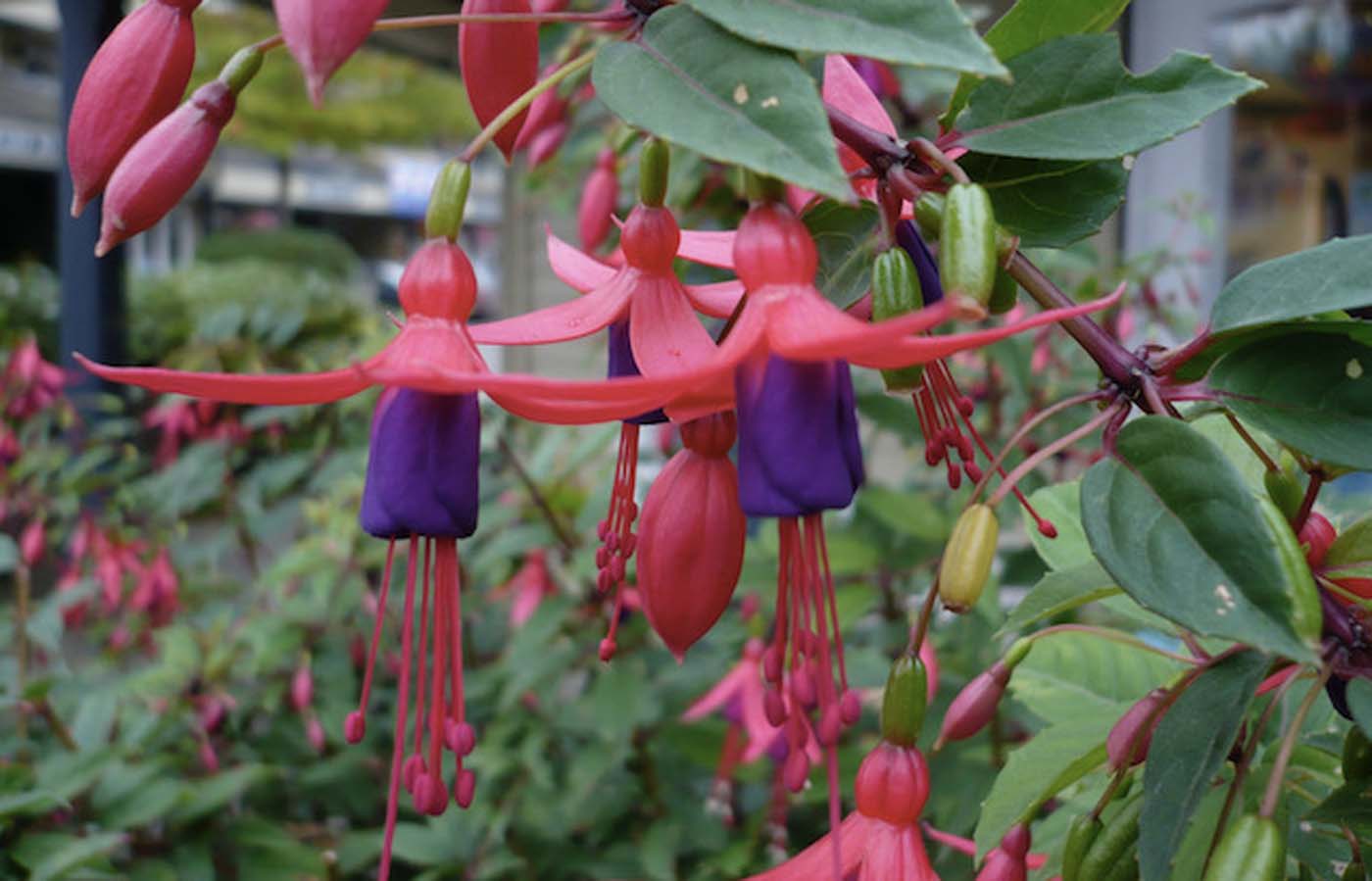

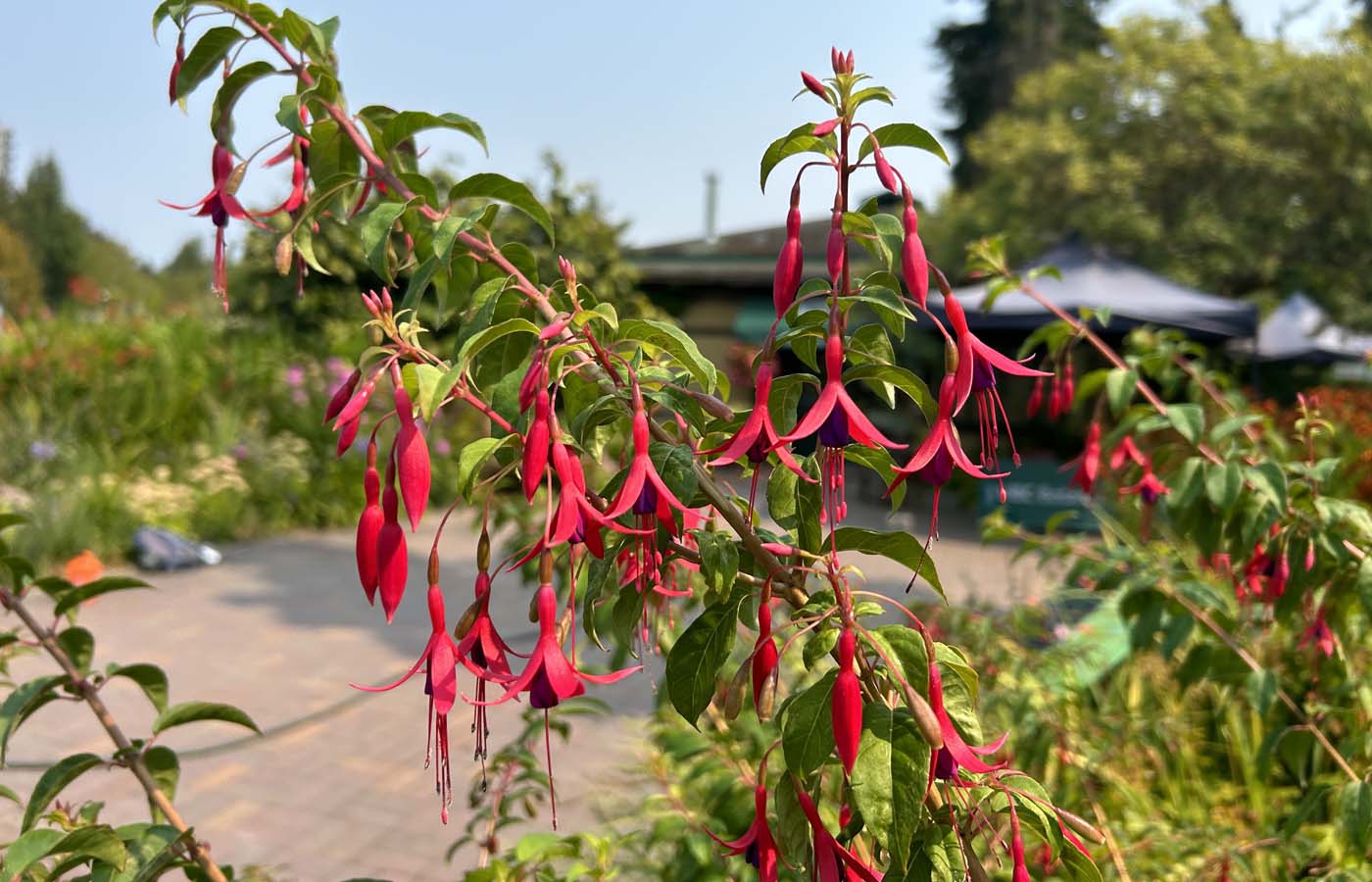
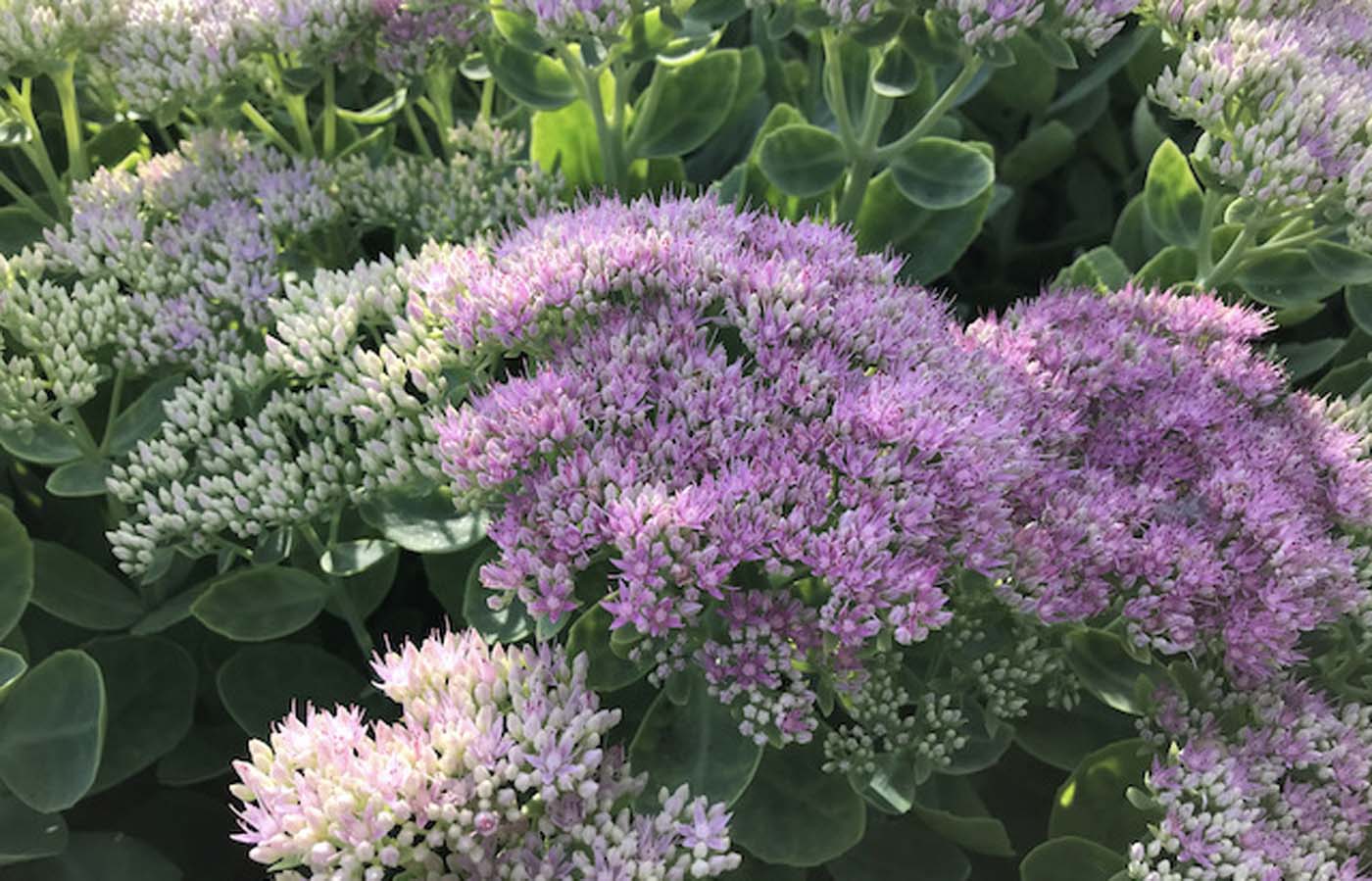
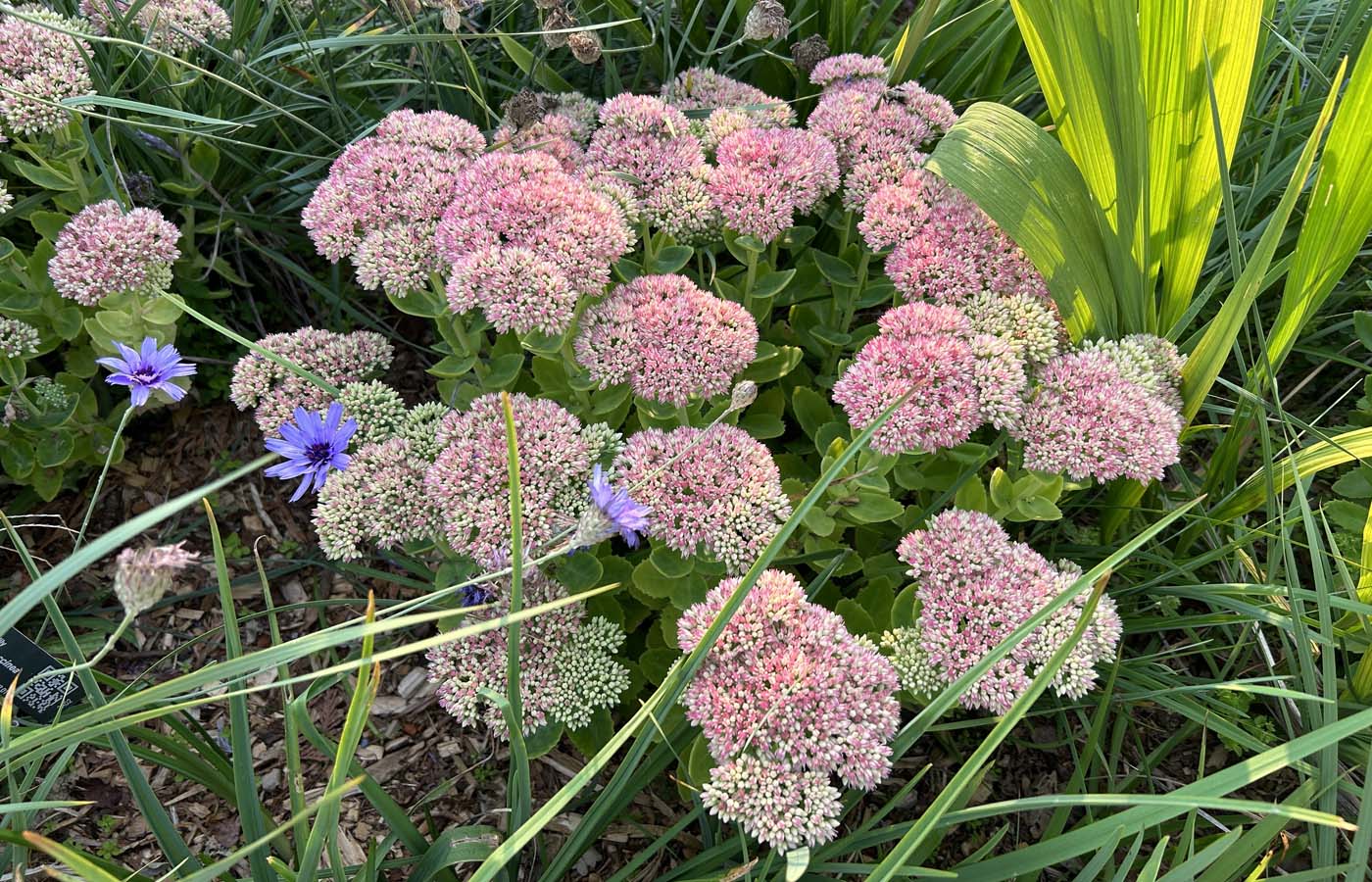

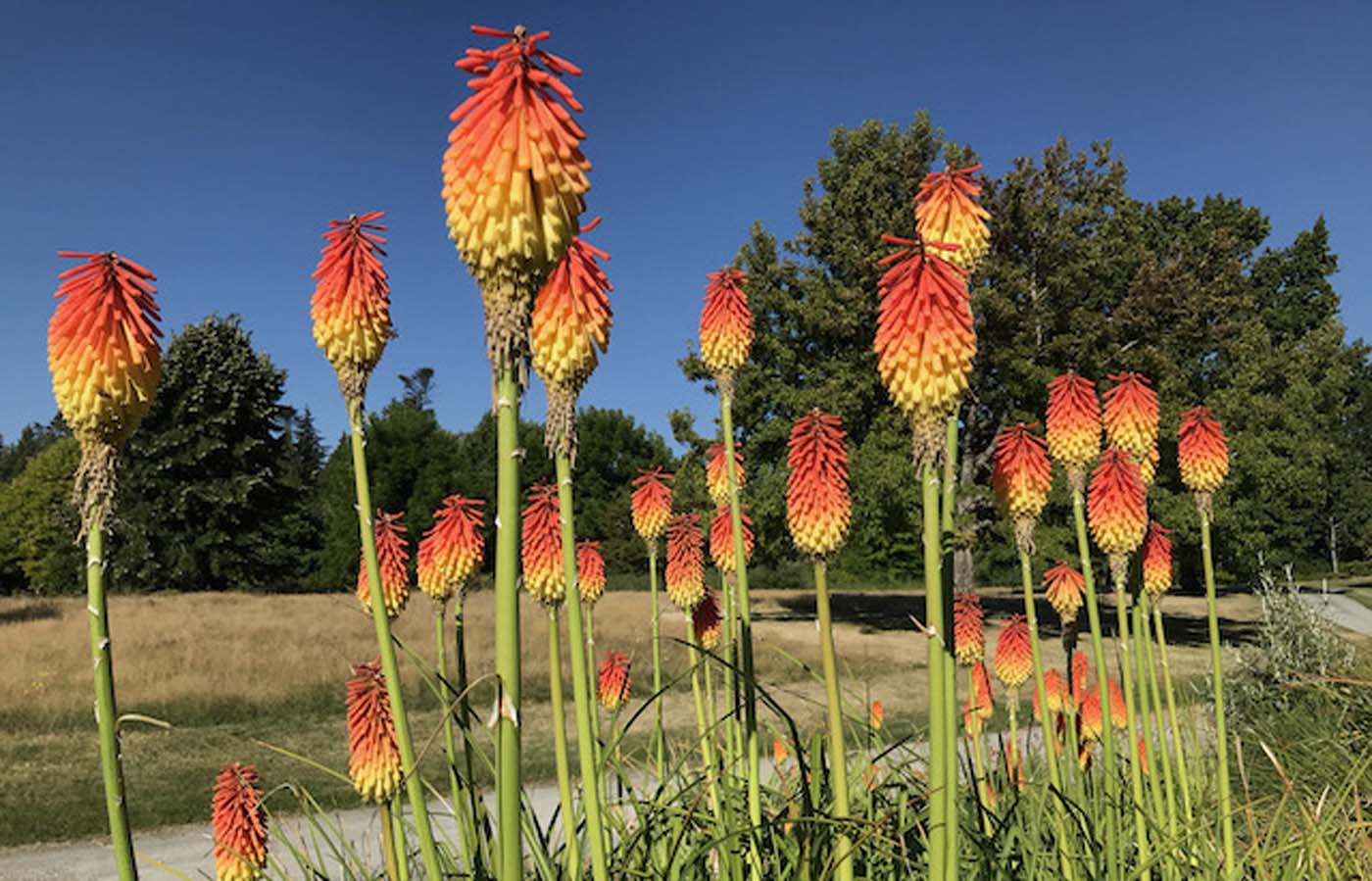
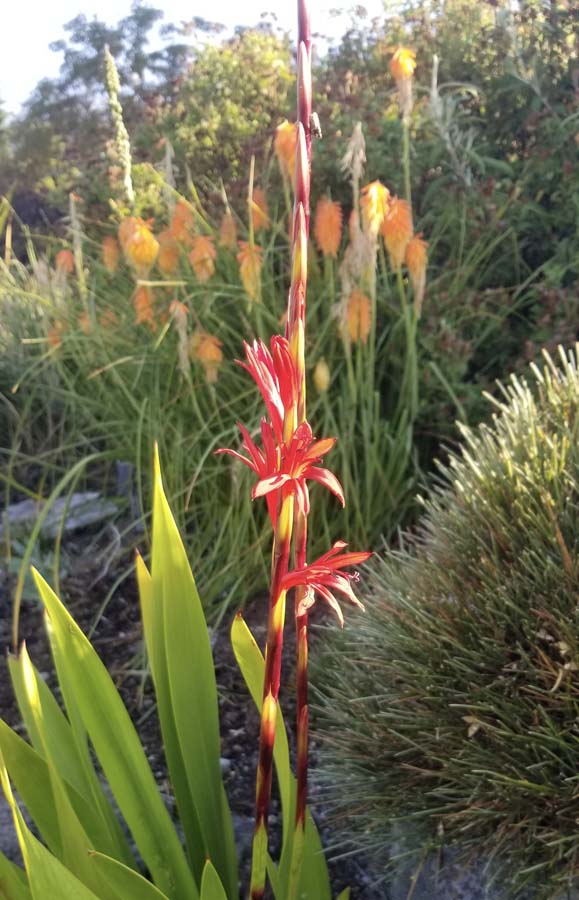
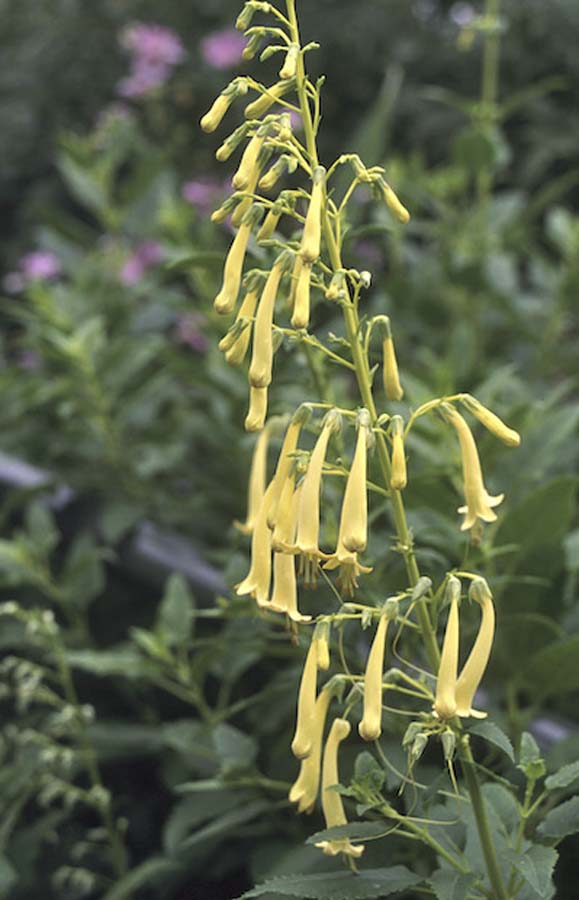
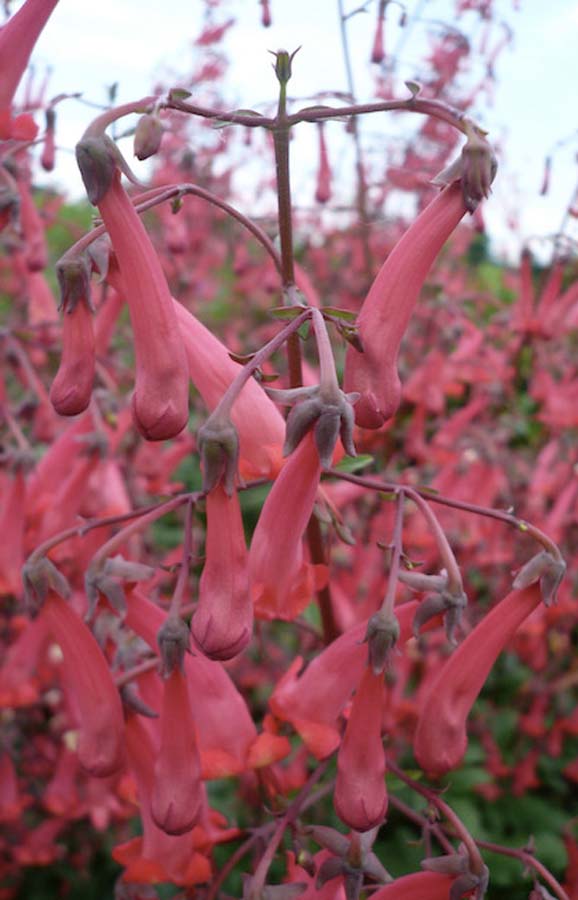
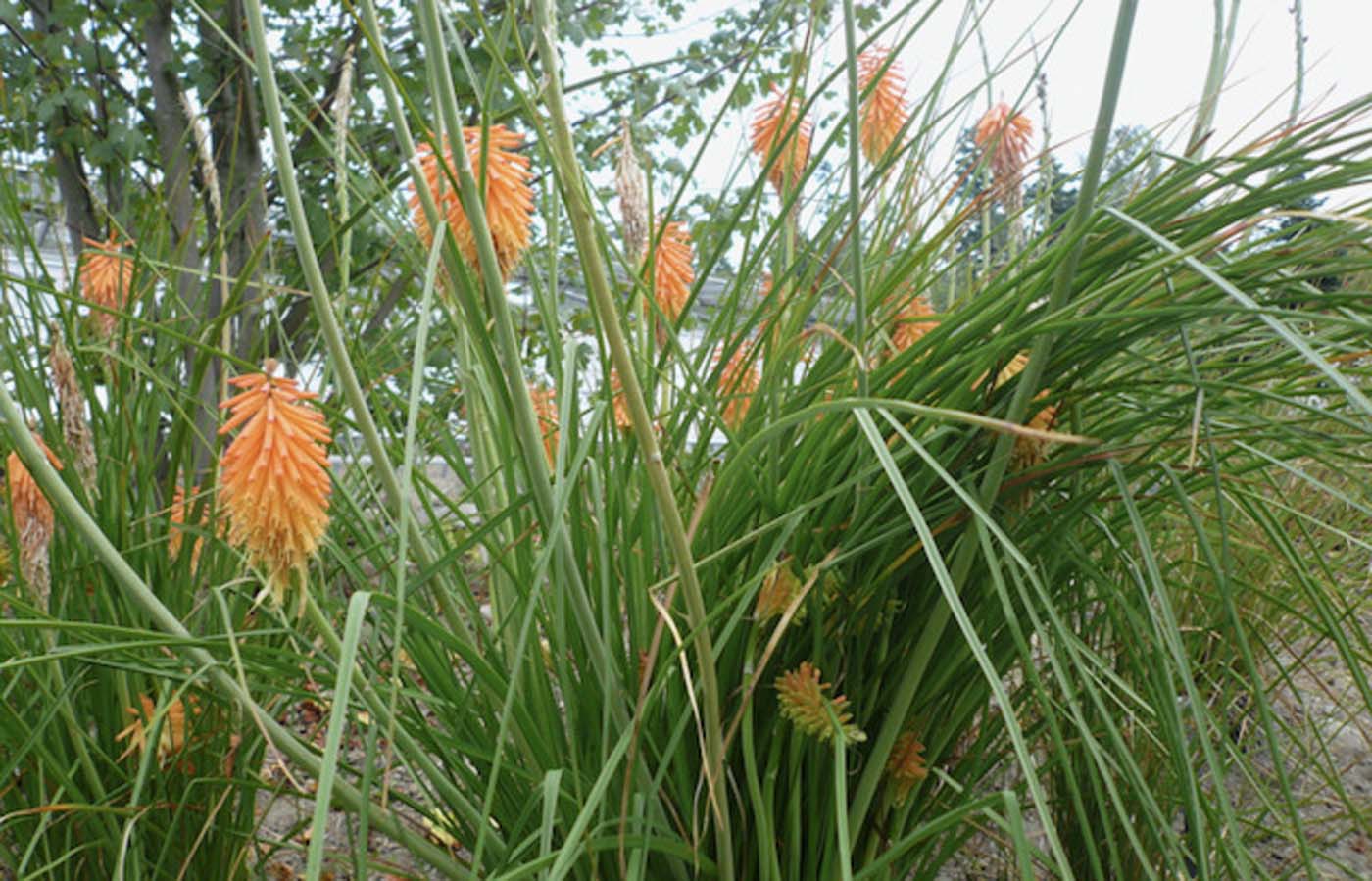
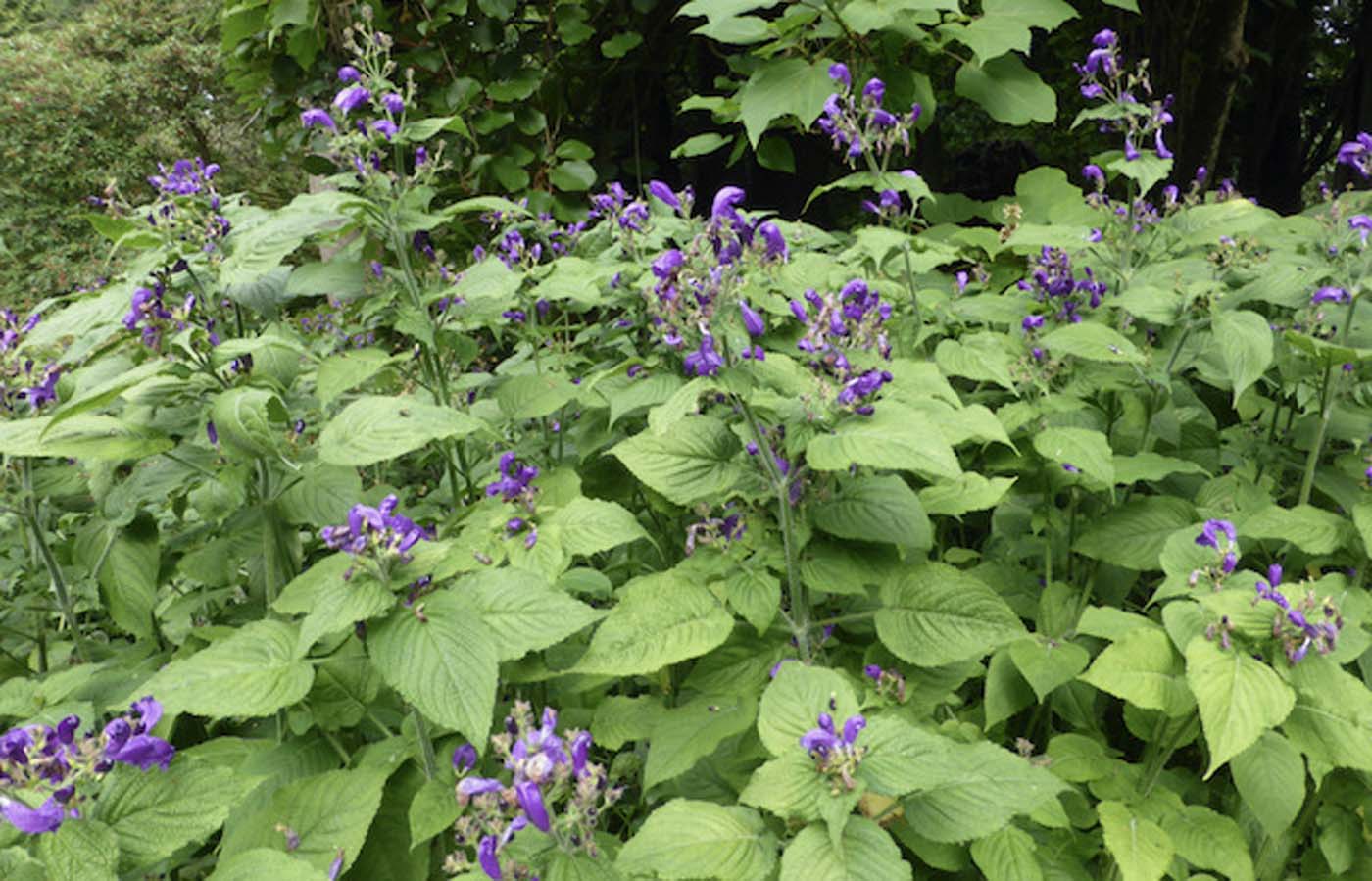

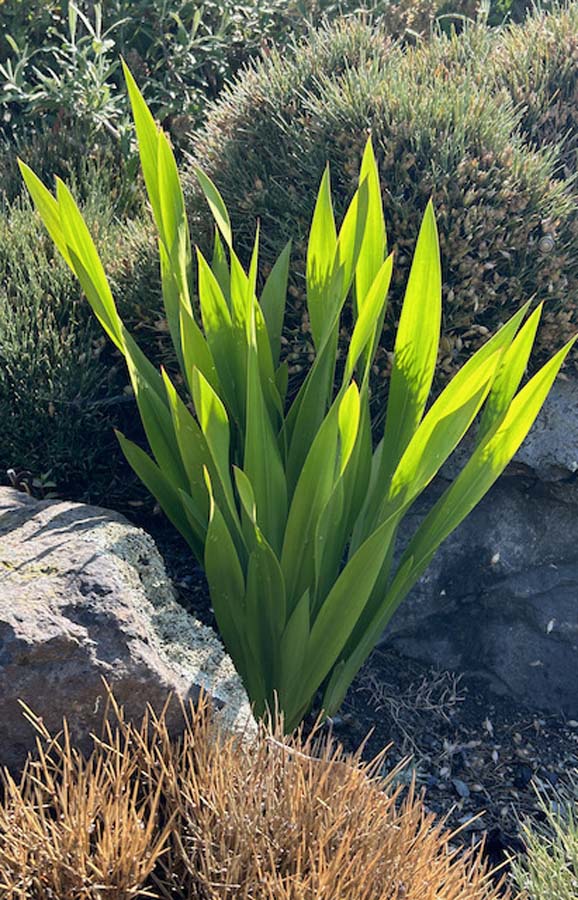
Enjoyed your review of the August/September Fall Garden. I love the Fuchsias.
I am looking for deer resistant plants, I have salvias and Australian mint.
We cage anything that will be browsed by fallow deer. Dry hillside!
Any other suggestions, sites would be helpful.
September’s garden often feels like an extended summer, with vibrant blooms stealing the spotlight. Fuchsias, hailing from Central and South America, remain a hummingbird magnet, with the cold-hardy Fuchsia magellanica, and its hybrid ‘Little Giant,’ adorning the entrance. Keep an eye out for the elegant Fuchsia magellanica Alba Group too. Phygelius and Epilobium, resembling fuchsias, grace the scene in September. Phygelius capensis and the hybrid Phygelius × rectus ‘Moonraker’ captivate with their blooms, originally pollinated by perching birds in southern Africa but now enjoyed by our native hummingbirds. Marvel at the red-flowered ‘Salmon Leap’ cultivar in the Front Entrance Plaza and the Contemporary Garden.